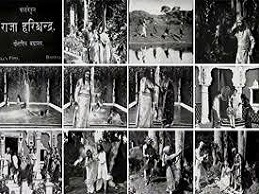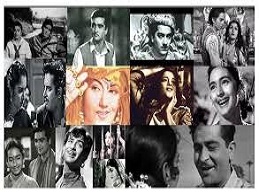India giving one of the flourishing cinema with different varieties. Actually foreigners are the pioneers of Indian cinema. In 1896, the Lumiere brothers explained the art of cinema by taking six short films cinematography in Bombay. The success of these films is done by the screening of films by James B. Stewart and Ted Hughes.Many short films taken at that time but Dada Saheb Phalke in 1913 made the first feature length silent film which hunted the success.

Films were produced in Hindi, Tamil, Telugu and Bengali. Mythology flourished more in South India where its social conservative morals films were taken. In Bombay the Indian and foreigner’s cinema started their success.
Then the stunts entry to the films which also gets the audience for more involvement to the Movie side. Following on Nadia’s heels in 1940, Florence Esekiel, a teenager from Baghdad, arrived in Bombay and was soon given the screen name of Nadira. She played the love interest in a Dilip Kumar film who at the time was a leading heartthrob. She gradually slipped into mother roles. One of her last appearances was in Ismail Merchant film Cotton Mary.
There were also notable male actors like Bob Christo, an Australian who also made a mark on the screen. He came to India as a villan in movies for a picture with actress Parveen Babi and ended up actually being in a film with her. Another notable actor is Tom Alter who has played the foreigner who does not speak the language, although he is fluent in Hindi and Urdu, even reciting poems in Urdu on the stage. He was raised in Mussourie, India.
A Franco-Burmese who the norms, and started sexuality filled roles. As side the glamour joins to play in the movies. Franz Austen, a German came to Bombay and directed 57 blockbuster films.
In 1947, India got its independence, historical and mythological stories were being replaced by social reformist films focusing on the lives of the lower classes, prostitution and the dowry system. This brought a new way of film-makers to the forefront such as Bimal Roy and Satyajit Ray among others.

India’s new way was founded, offering a greater sense of realism to the public and getting recognition abroad. Then the industry went to bring out ‘masala’ films with a cluster including action, melodrama punctuated, comedy, with songs and dances. There is a growing movement to make Indian cinema more realby comedy,sensational,emotional,sympathetic,social movies in several languages. A group of young filmmakers like Anurag Kashyap, Anand Gandhi, etc.Indian cinema now playing a mass collections with numbers of directors, producers, artists, cinematographer. It improved lot in the picturisation,story level, delivering level and trailer level.Many heros,heroins,comedians and supporting actors.The actors like Amitabhbatchan,mohanlal, mammotty, Rajinikanth, Kamal Hassan, uttam kumar,pawan kalyan etc.

Many talented directors made the Indian cinema to extent. Now no more favourable time for us than Indian cinema than today. With a vast creative community, new technology and investment interest, we are seeing Indian cinema crossed its national borders in India’s movie project as socio-political and economic influence around the world. Indian cinema have many blockbusters and many film placed in box office hits. Totally more than 50 productions houses are in India for the cinema. Many awards are specially allotted in film sides. Indian cinema has become a part and parcel of our daily life whether it is a regional or a Bollywood movie. Entertainment is the keyword for Indian cinema. Indian cinema completed and celebrated its 100 years with large number of mass hits and the realistic stories.